Nob Hill’s storied past as the exclusive domain of San Francisco’s elite is uncovered through a captivating walking tour. Visitors explore the grand mansions and palatial hotels that once housed the city’s railroad tycoons, lumber barons, and political figures. The neighborhood’s architectural gems, including the iconic Fairmont San Francisco, showcase the extravagance and ambition that defined this enclave. Atop the hill, sweeping vistas of the city’s landmarks and natural surroundings provide an unparalleled perspective on San Francisco’s storied past. What secrets lie hidden within Nob Hill’s illustrious history?
This experience made our list of the 20 Best Walking Tours In San Francisco.
Key Points

- Explore the grand mansions and lavish estates built by Nob Hill’s elite tycoons, such as the Flood, Huntington, and Stanford mansions.
- Discover how the introduction of cable cars in the 1870s transformed Nob Hill into an exclusive enclave for San Francisco’s wealthy class.
- Witness the architectural grandeur of historic hotels like the Fairmont San Francisco and the Mark Hopkins Hotel, which showcase the neighborhood’s golden age.
- Admire the panoramic views of San Francisco’s iconic skyline, including landmarks like the Golden Gate Bridge and Coit Tower, from Nob Hill’s hilltop vantage point.
- Learn about Nob Hill’s resilience in the face of the 1906 San Francisco earthquake and how the neighborhood was painstakingly rebuilt to regain its status as the city’s most exclusive address.
Mansions of Nob Hill’s Elite
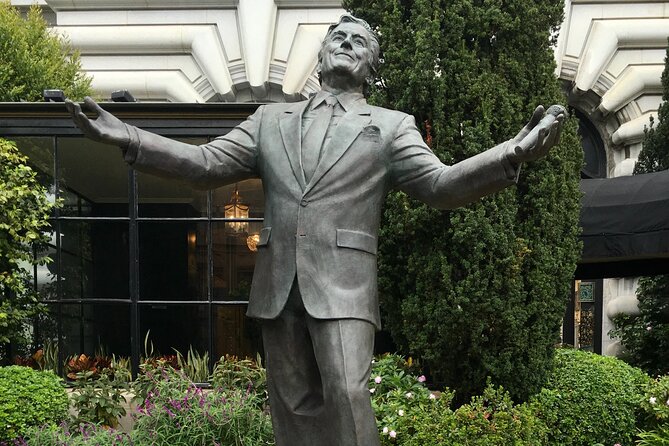
One of the grandest mansions atop Nob Hill is the Flood Mansion, built in the 1880s by silver mining magnate James Clair Flood. The opulent home is a testament to the wealth and power of San Francisco’s elite during the Gilded Age.
Other notable estates include the Huntington Mansion, home to railroad baron Collis P. Huntington, and the Stanford Mansion, built by former California Governor and university founder Leland Stanford.
These palatial residences showcase the extravagant lifestyles of the business tycoons and politicians who dominated Nob Hill in the late 19th century. Strolling past these magnificent structures, visitors can almost imagine the glamour and grandeur that once defined this exclusive enclave.
If you're enjoying exploring San Francisco on foot, you'll love these other walking tours we recommend
Tycoons and Lumber Barons

The Nob Hill walking tour also explores the stories of the railroad tycoons and lumber barons who built the lavish mansions atop the hill, showcasing their immense wealth and influence in 19th-century San Francisco. These elite figures, like Leland Stanford and James Flood, amassed fortunes through the booming industries that transformed the West. They constructed palatial homes with opulent details, setting themselves apart from the rest of the city. The tour guides visitors through the neighborhood, revealing how these tycoons’ ambition and ostentation shaped Nob Hill into an exclusive enclave.
| Railroad Tycoons | Lumber Barons | Mansions |
|---|---|---|
| Leland Stanford | James Flood | Flood Mansion |
| Charles Crocker | William Sharon | Crocker Mansion |
| Mark Hopkins | Darius Ogden Mills | Hopkins Mansion |
Impact of Cable Cars

Cable cars played a pivotal role in shaping the development of Nob Hill, allowing the city’s elite to easily access their grand mansions atop the steep terrain.
The introduction of this innovative transportation system in the 1870s enabled wealthy residents to commute from their hilltop homes to the bustling commercial districts below, further solidifying Nob Hill’s status as an exclusive enclave.
Prior to the cable cars, the steep hills had proven a significant obstacle for the city’s upper-class, but the new mode of transport transformed Nob Hill into a desirable residential area.
Today, the historic cable cars continue to ply their routes up and down the iconic hills, providing both transportation and a glimpse into San Francisco’s storied past.
The 1906 Earthquake’s Legacy
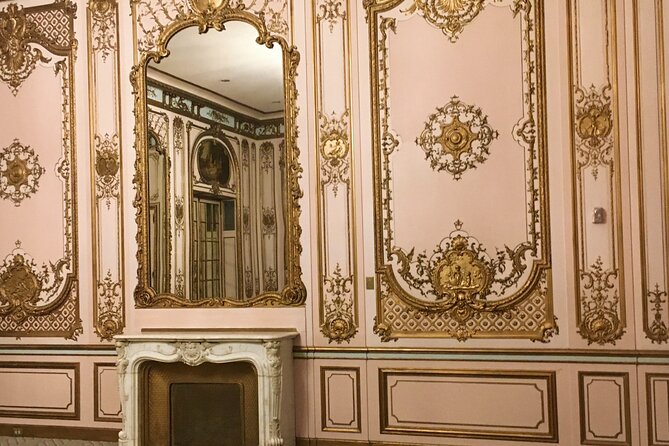
Nob Hill’s gilded mansions and grand hotels didn’t escape the devastation of the 1906 San Francisco earthquake, which left much of the neighborhood in ruins.
The Fairmont Hotel, a crown jewel of Nob Hill, was heavily damaged and required extensive repairs. The mansions of the railroad barons and lumber tycoons were also affected, with some requiring complete reconstruction.
Despite the setback, the neighborhood’s wealthy residents were determined to restore their domain to its former glory. Over the following years, the historic buildings were painstakingly rebuilt, and Nob Hill regained its status as the city’s most exclusive enclave.
The 1906 earthquake may have left its mark, but it couldn’t diminish the enduring allure of this iconic San Francisco neighborhood.
Nob Hill’s Exclusive Origins
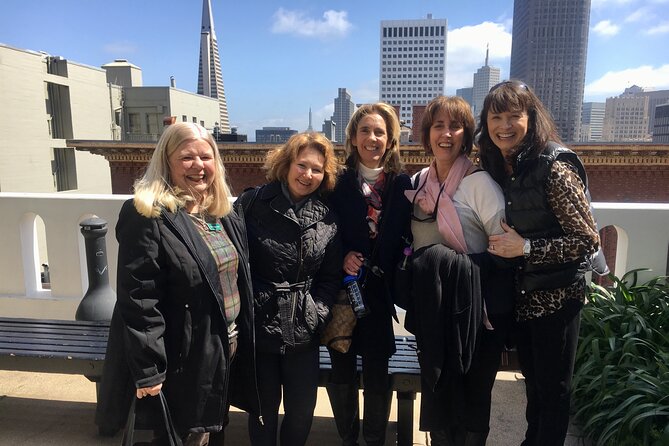
Atop San Francisco’s steep hills, a select group of the city’s wealthiest residents once made their homes, establishing Nob Hill as the most exclusive address in 19th-century California. These railroad tycoons, lumber barons, and political elite built grand mansions and hotels, flaunting their power and influence.
The neighborhood’s small, steep patch of land became a symbol of the city’s rapid growth and the rise of its industrial titans. Three key factors shaped Nob Hill’s exclusivity:
- Commanding views of the bay and city
- Proximity to the city’s financial district
- Isolation from the working-class neighborhoods below
This affluent enclave maintained its elite status even after the 1906 earthquake, as the neighborhood rebuilt and continued to attract the city’s power brokers.
Fascinated by San Francisco's past? More historical tours we've covered
- History and Architecture Walking Tour of San Francisco Financial District
- Delicious Fun Food and History Tour of North Beach and Beyond!
- Night Tour: Happy Hour History of SF
- North Beach Food & History Walking Tour – Small Group
- San Francisco: Food + History + Art Tour
- Chinatown Food & History Walking Tour – Small Group
Neighborhood’s Changing Landscape
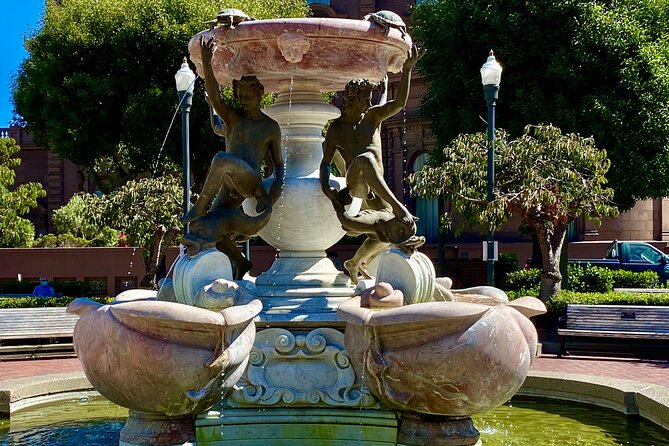
Though Nob Hill’s elite legacy has endured, the neighborhood’s landscape has undergone notable changes over the decades, reflecting San Francisco’s evolving character.
Once dominated by the grand mansions of railroad tycoons and lumber barons, Nob Hill has seen the construction of sleek high-rise condominiums and hotels that stand alongside historic landmarks.
The 1906 earthquake and subsequent rebuilding efforts reshaped the area, while the cable car system has remained an iconic fixture.
Today, Nob Hill blends its storied past with modern developments, offering visitors a glimpse into the city’s transformation.
Despite these changes, the neighborhood retains an aura of exclusivity and prestige that continues to captivate both residents and travelers alike.
Grand Hotels and Architecture
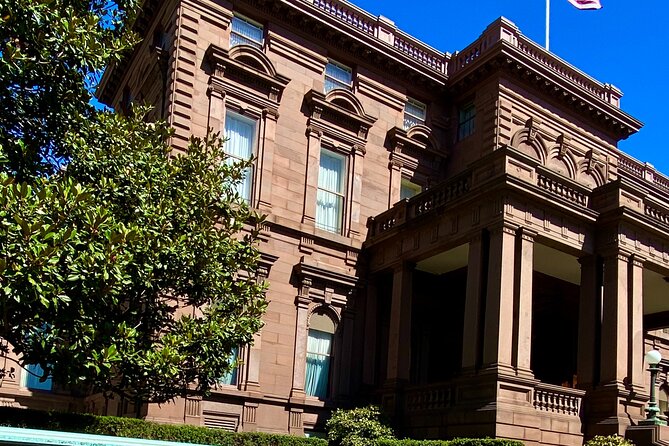
Towering over the city, the grand hotels of Nob Hill have long captivated visitors with their opulent architecture and storied pasts. These palatial structures, built by the city’s elite in the late 19th century, stand as testaments to the wealth and power of their original owners.
Among the most prominent are:
The Fairmont San Francisco, a Beaux-Arts style landmark known for its iconic gold-domed roof.
The Mark Hopkins Hotel, a neoclassical masterpiece that once hosted the city’s high society.
The Stanford Court, a Renaissance Revival-style edifice that has been a Nob Hill fixture for over a century.
These grand hotels not only showcase the architectural splendor of the neighborhood’s golden age but also offer glimpses into the lives of San Francisco’s most influential figures.
Panoramic Views of the City
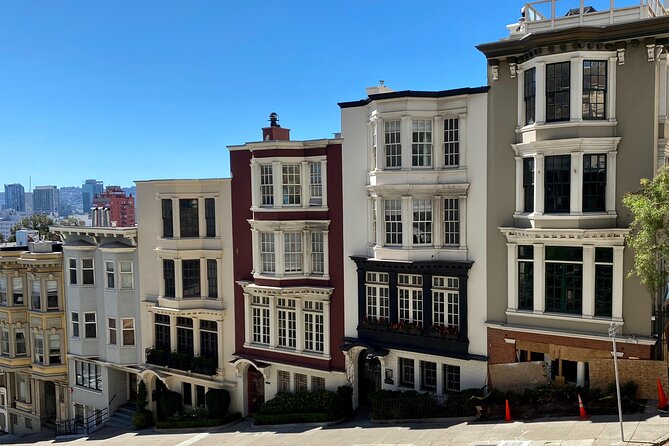
Visitors can soak up panoramic vistas of San Francisco and the surrounding bay from the elevated vantage points of Nob Hill.
The neighborhood’s hilltop location provides unobstructed views that stretch across the city’s iconic skyline, showcasing landmarks like the Golden Gate Bridge and Coit Tower.
As you stroll the winding streets, you’ll be treated to breathtaking panoramas in every direction. Look out over the rolling hills, picturesque cable cars, and shimmering waters of the bay.
The sweeping views from Nob Hill offer a unique perspective on San Francisco’s beautiful natural setting and bustling urban core, providing an unforgettable experience for all who visit.
Frequently Asked Questions
Is the Tour Suitable for Children?
The tour may not be the most suitable for children, as it focuses on the history and architecture of Nob Hill, which could be less engaging for younger audiences. However, the walking tour is wheelchair accessible and near public transportation, making it accessible to a range of visitors.
What Is the Tour Cancellation Policy?
The tour’s cancellation policy allows participants to cancel up to 24 hours in advance for a full refund. Within 24 hours, no refunds are provided. Changes or cancellations can be made online or by contacting the tour operator.
Are There Any Food or Drink Stops During the Tour?
The tour does not include any scheduled food or drink stops. However, participants are free to explore the many cafes, restaurants, and shops in the Nob Hill neighborhood during the 2.5-hour walking tour at their own pace and expense.
Can We Take Photos During the Tour?
Yes, participants are encouraged to take photos during the Nob Hill walking tour. The guide will point out prime photo opportunities and provide historical context to enrich the photographic experience.
Is There an Audio Guide Available for the Tour?
No, there is no audio guide available for this walking tour. The tour is fully narrated by a local guide, who provides all the informative commentary throughout the 2.5-hour experience.
Recap
Nob Hill’s walking tour offers a captivating glimpse into San Francisco’s elite past. Visitors explore the grand mansions and hotels that once housed the city’s powerful, showcasing the extravagance and ambition that defined this enclave.
Sweeping vistas from atop the hill provide an unparalleled perspective on San Francisco’s storied history and present, leaving a lasting impression on all who experience this unique neighborhood.
More Walking Tours in San Francisco
- San Francisco Customizable Walking Tour
- Self-Guided Golden Gate Bridge Bike or Walking App Tour
- San Francisco Downtown Walking Tour With Cruise Tickets
- Public Weekend Walking Tour: Highlights of Golden Gate Park
- North Beach and Chinatown Smartphone Guided Walking Tour
- Muir Woods Self-Guided Driving and Walking Audio Tour
More Tours in San Francisco
- Lake Tahoe Private Tour From San Francisco
- Alcatraz With Muir Woods and Sausalito Tour
- City Tour With Food Stop at Ferry Building + Optional Alcatraz
- Combo Small-Group Tour: SF City Plus Muir Woods & Sausalito
- Best Private Wine Tours of Napa Valley Sonoma for 4 to 8 People
- San Francisco Lucky Tuk Tuk Ultimate City Private Tour 2.5 Hours
More Tour Reviews in San Francisco
Not for you? Here's more things to do in San Francisco we have recnetly reviewed
- 2 Best Craft Beer Tours And Tastings In San Francisco
- 20 Best 2 Day Tours In San Francisco
- 11 Best 3 Day Tours In San Francisco
- 7 Best 4 Day Tours In San Francisco
- 5 Best Shopping Tours In San Francisco
- 7 Best Christmas Experiences In San Francisco
- 25 Best Cruises And Boat Tours In San Francisco
- 25 Best Food Tours In San Francisco
- 6 Best Full-Day Tours In San Francisco
- Best Coffee Tours And Tastings In San Francisco
- 14 Best Photography Experiences In San Francisco
- 13 Best Dining Experiences In San Francisco
